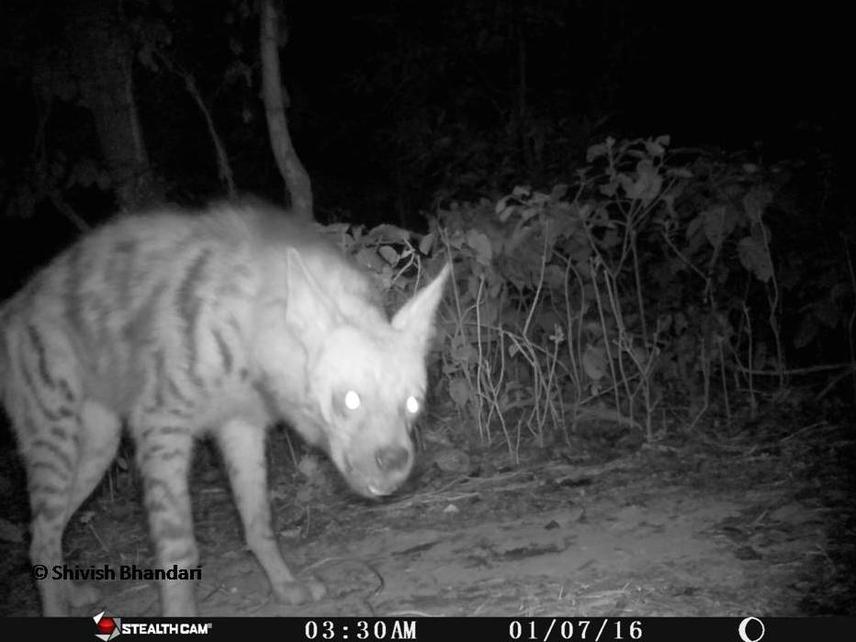Shivish Bhandari
Other projects
23 Jan 2017
Ecology and Conservation of the Striped Hyaena (Hyaena hyaena Linnaeus 1758) in Lowland, Nepal
25 May 2018
Community Stewardship to Mitigate Human-Hyena (hyaena hyaena) Conflict in Parsa National Park and its Adjoining Areas
The Hyaena, one of the least studied carnivore and this study aims to explore the suitable habitat, estimated population and conservation status in Sarlahi and Rautahat districts of Nepal.

Striped hyaena.
The Striped Hyaena (Hyaena hyaena Linnaeus, 1758) is one of the least studied carnivore in Nepal and has been classified on the IUCN Red List as “Near Threatened” and protected by Government of Nepal “National Park and Wildlife Conservation Act 1973” due to retaliatory killings, persecution, depleting prey populations and loss of habitat. These threats to this species are not effectively addressed in outside the protected areas and therefore it is being challenging for the conservation of Striped Hyaena. Sightings of this species are not common and the population is considered to be in declining in Nepal. Hofer and Mills (1998) considered a maximum population of 50 individuals. People’s negative attitude towards the Striped Hyaena is a major issue to save its remains population. Livestock grazing and collection of firewood are uncontrolled as well as different body parts of the Striped Hyaena are commonly used to cure physical and mental diseases among the locals. Furthermore, there are no more studies of carnivore in terms of habitat assessment and population status in this study site. Hence it is made essential to explain baseline information and conservation of Striped Hyaena.
This research project aims to:
• explore the suitable habitat and estimate the population of Hyaena
• develop community conservation awareness programmes highlighting the species ecological role.
The study area is located in central Terai of Nepal and covers an area of 300 square Kilometre with Sal forest, grassland, Acacia forest and mixed riverine forest. Its altitude range is 150 – 900 m; and joins to the Terai Arc Landscape (TAL) Project area in the west.
The estimated population of Striped Hyaena in Rautahat and Sarlahi will be explored and conservation awareness program will be helpful for its long-term management. Physical parameters of the habitat of Striped Hyaena will be explored by remote sensing and geographic information system technologies and habitat will be evaluated by geospatial modelling and prepared landscape pattern map will be useful to explore wildlife habitat, corridor and human settlement that are helpful for human – Striped hyaena conflict mitigation in those areas. This research also provides knowledge to the local people to sustaining essential ecosystem-services that forests provide, including watershed protection, soil conservation etc. and the establishment of community forest programmes will improve habitat for the species in this non-protected range.